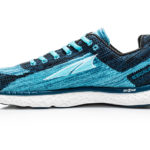Tight calf muscles contribute to plantar fasciitis in runners
Plantar fasciitis is the third most common running-related injury. Roughly 10% of the general population will suffer from heel pain. Those numbers increase to roughly 20% in runners. Fortunately, conservative treatment is effective in 85% of patients after three months and 95% after a year. Tight calf muscles have long been implicated as a contributing factor for plantar fasciitis. A recent study looked at the correlation between tight calf muscles and plantar fasciitis in runners. The study involved 71 runners, 23 of whom had plantar fasciitis. Active range of motion at the ankle was significantly greater in healthy runners than in those suffering from plantar fasciitis. What the researchers found was that for every degree of decrease in ankle dorsiflexion (bending the ankle up), the risk of plantar fasciitis increased by 14.6%. This study confirms that calf stretches are a critical component to any plantar fasciitis treatment plan. How does one go about stretching the calf muscles? Here are two videos demonstrating how to stretch the upper calf (gastrocnemius) and the lower calf (soleus). Although not generally enough on their own, these stretches can help alleviate plantar fascial pain. Try it the next time your heel hurts.
McNamee MJ et. al. Analysis of plantar fasciitis risk factors among intercollegiate and recreational runners. J Athl Train 2017; 52(6 Suppl):S110

 Previous Post
Previous Post Next Post
Next Post
